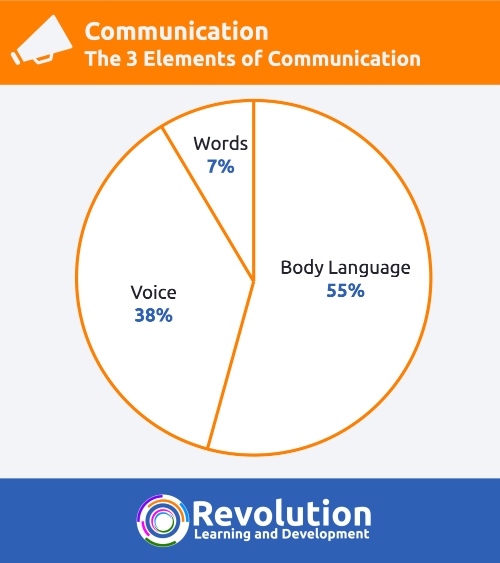Elements Of Body Language
When it comes to communication, words aren’t the only things that matter. In fact, sometimes our bodies speak louder than anything we say. That’s where the fascinating elements of body language come into play. Whether it’s a smile, a wave, or a shrug, our bodies have a language all their own. So let’s dive into the wonderful world of body language and explore its diverse elements!
Picture this: you’re in a group of people and someone walks in with their shoulders slouched, avoiding eye contact. What does that convey? Well, body language can reveal a lot about a person’s confidence, emotions, and intentions. From facial expressions to gestures, body language provides subtle cues that can help us understand what others are really thinking and feeling.
So how can we decode this secret language? By understanding the key elements that make up body language, we unlock the ability to read people like a book. From facial expressions and hand movements to posture and personal space, each element plays a crucial role in nonverbal communication. So get ready to learn about the signals our bodies send and how to interpret them effectively.
In this article, we’ll explore the fascinating elements of body language that shape the way we interact and understand one another. Whether you want to improve your own nonverbal communication skills or become a master at reading others, this guide will equip you with the knowledge you need to become a body language pro. Get ready to unravel the mysteries of nonverbal communication and discover a whole new dimension of human connection!

The Elements of Body Language: Unlocking the Power of Nonverbal Communication
In a world where words often fail to capture the nuances of human interaction, body language acts as a universal language of expression. The way we hold ourselves, use our gestures, and even the subtle movements of our eyes, can convey a wealth of information without uttering a single word. Understanding the elements of body language is a skill that can transform the way we communicate and engage with others. In this article, we will explore the various aspects of body language, from facial expressions to posture, and delve into the fascinating world of nonverbal communication.
The Power of Facial Expressions
Our faces are the windows to our emotions, and mastering the art of reading and interpreting facial expressions is essential in understanding the true meaning behind a person’s words. From a warm smile to a furrowed brow, our facial expressions can reveal happiness, anger, sadness, fear, and a range of other emotions. By paying attention to the subtle movements of the eyebrows, eyes, mouth, and other facial features, we can gain valuable insights into a person’s true feelings. Additionally, being aware of our own facial expressions allows us to convey our emotions authentically, fostering genuine connections with others.
Nonverbal Communication Through Gestures
Gestures are an integral part of human communication, allowing us to emphasize our words, convey messages, and express ourselves physically. From a simple thumbs up to intricate hand movements, gestures have the power to enhance our verbal communication and add depth to our message. For example, pointing can be a powerful tool to direct attention, while a clenched fist can convey determination or anger. However, gestures can also vary across cultures, so it is important to be mindful of cultural differences when interpreting and using gestures in a multicultural context.
Posture: The Silent Communicator
Our posture speaks volumes about our attitude, confidence, and level of engagement in a conversation. Whether we slouch with crossed arms or stand tall with an open stance, our body alignment can influence how others perceive us and how we feel about ourselves. Maintaining an upright posture exudes confidence, while leaning forward indicates interest and attentiveness. Understanding the impact of posture and making conscious adjustments can significantly improve our presence and the way we connect with others.
Eye Contact: The Gateway to Connection
Eye contact is often referred to as the gateway to connection, as it establishes trust, rapport, and engagement between individuals. Maintaining appropriate eye contact during a conversation signals active listening and interest in what the other person is saying. On the other hand, avoiding eye contact can be interpreted as disinterest or lack of confidence. It is important to strike a balance, as excessive or intense eye contact can be perceived as intimidating or confrontational. Being mindful of cultural norms regarding eye contact is crucial, as these norms can vary widely.
Tone of Voice: Unveiling Emotion
Our tone of voice plays a pivotal role in conveying emotions and underlying messages in our speech. By using different intonations, pitches, and volumes, we can express excitement, anger, sadness, or even sarcasm. Paying attention to the tone of voice of others helps us discern the genuine meaning behind their words and allows us to respond appropriately. Similarly, being aware of our own tone of voice empowers us to communicate our feelings and intentions more effectively, ensuring our message is received as intended.
Proxemics: The Dance of Personal Space
Proxemics is the study of the use and perception of personal space and distance in communication. Different cultures have different norms and expectations regarding personal space, and violating these cultural norms can lead to discomfort or misinterpretation. Understanding how to navigate personal space according to societal norms enhances our ability to build rapport and establish positive connections with others. It is essential to be mindful of cultural and individual preferences when it comes to proximity and personal space to ensure respectful and effective communication.
Emotional Cues: Subtle Signs of Emotional States
In addition to facial expressions, our bodies also provide subtle cues about our emotional states. These cues include things like fidgeting, crossed arms, or tapping fingers, which can indicate nervousness, discomfort, or impatience. By observing these cues, we can gain insights into a person’s emotional state and adjust our communication style accordingly. Similarly, being aware of our own emotional cues allows us to manage our emotions more effectively, enhancing our overall communication and interpersonal skills.
The Importance of Body Language in Everyday Life
Body language is an integral part of our daily interactions, shaping the way we connect with others and how we are perceived. Understanding the elements of body language equips us with a valuable set of skills that can be applied in various situations. Whether it’s in the workplace, social settings, or personal relationships, being able to interpret and utilize body language effectively enhances our communication, builds trust, and strengthens connections. Let’s explore three key contexts where body language plays a crucial role.
Body Language in the Workplace
The workplace is a dynamic environment where effective communication is essential for collaboration, productivity, and professional growth. Body language can greatly influence how we are perceived by our colleagues, superiors, and subordinates. For instance, maintaining positive and open body language during meetings and presentations can project confidence, credibility, and engender trust. Conversely, closed-off postures or defensive gestures may create barriers to communication and hinder effective collaboration. Understanding and leveraging body language in the workplace can facilitate better teamwork, smoother negotiations, and increased career success.
Body Language in Social Settings
Social settings, whether formal or informal, rely heavily on nonverbal cues for meaningful interactions. From networking events to casual gatherings, our body language can attract or repel others, influence the impression we make, and shape the quality of our social connections. Smiling, making eye contact, and maintaining an open posture can help create a positive and approachable demeanor, fostering more inclusive and enjoyable social experiences. On the other hand, closed-off body language or lack of engagement may limit opportunities for meaningful connections and hinder social interactions. By being mindful of our body language and adapting it to different social contexts, we can enhance our social skills and strengthen our relationships.
Body Language in Personal Relationships
Communication between individuals in personal relationships extends far beyond spoken words. In romantic relationships, friendships, and familial connections, body language plays a vital role in expressing love, understanding, and empathy. Holding hands, embracing, or maintaining eye contact can deepen emotional connections and convey affection. Concurrently, crossed arms, lack of physical contact, or avoiding eye contact can indicate emotional barriers or disagreements. Recognizing and responding to the subtle cues of body language in personal relationships allows for greater empathy, effective conflict resolution, and the building of stronger emotional bonds.
Tips for Mastering Body Language
Now that we have explored the various elements of body language and their significance in everyday life, let’s delve into some practical tips for mastering this art form and becoming proficient in nonverbal communication.
1. Practice Self-Awareness: Start by observing your own body language and becoming aware of how it influences your interactions and relationships. Pay attention to your posture, facial expressions, and gestures, and make conscious adjustments when necessary.
2. Enhance Emotional Intelligence: Develop your ability to recognize emotions in yourself and others through their nonverbal cues. This can aid in building rapport, empathy, and better understanding during interpersonal communication.
3. Adapt to Cultural Differences: Be mindful of cultural norms regarding body language when interacting with individuals from different cultures. Respect and adapt to their expectations to foster effective cross-cultural communication.
4. Learn to Read Others: Observe the body language of others and look for consistent patterns in their facial expressions, gestures, and postures. This can provide valuable insights into their thoughts, emotions, and intentions.
5. Pay Attention to Context: Consider the specific context in which body language is being displayed. Different situations may call for different displays of body language. Adapt your own body language accordingly to match the desired outcome.
6. Practice Active Listening: Use your body language to demonstrate active listening by maintaining eye contact, nodding, and providing affirmative gestures. This shows others that you are present and engaged in the conversation.
7. Seek Feedback: Ask trusted friends, colleagues, or mentors for feedback on your body language and its impact on your interactions. Their insights can help you identify areas for improvement and refine your nonverbal communication skills.
Remember, mastering body language is an ongoing journey that requires practice, observation, and self-reflection. By honing your skills in this universal language, you can enhance your communication abilities and connect with others on a deeper level.
In conclusion, body language is a powerful tool that allows us to communicate and connect beyond words. From the microexpressions on our faces to the positioning of our bodies, every element of body language carries meaning and can shape our interactions. By understanding and harnessing the power of body language, we can become more effective communicators, build stronger relationships, and navigate the complexities of human interaction with confidence and skill. So, let us embrace the art of nonverbal communication and unlock the countless possibilities it holds.
Key Takeaways: Elements of Body Language
- Body language includes gestures, facial expressions, and posture.
- Eye contact is an important element of body language.
- Smiling can convey friendliness and openness.
- Mirroring someone’s body language can build rapport.
- Using hand gestures can help convey a message more effectively.
Frequently Asked Questions
Welcome to our FAQ section on the elements of body language. Here, we’ll explore some common queries related to this fascinating topic. Understanding the various aspects of body language can greatly enhance our communication skills and help us better understand others. So, let’s dive in!
1. How can I interpret someone’s body language?
Interpreting body language involves observing the different cues such as facial expressions, gestures, and posture. For example, raised eyebrows can indicate surprise or disbelief, while crossed arms may suggest defensiveness or discomfort. It’s essential to consider clusters of signals, as single cues may not tell the whole story. When interpreting body language, pay attention to context, as cultural differences can influence meaning.
Keep in mind that body language is subjective, and individual cues may have different interpretations for different people. It’s crucial to consider the overall context, establish baseline behavior, and look for patterns to accurately interpret someone’s body language.
2. How can I improve my own body language?
Your body language can significantly impact how others perceive you. To improve your body language, start by becoming more aware of your posture, facial expressions, and gestures. Stand or sit up straight, maintain eye contact, and avoid fidgeting. Open body positions, such as uncrossed arms and legs, can convey approachability and openness.
Practice mirroring others’ body language to establish rapport, but be subtle and genuine in your actions. Additionally, work on your non-verbal cues by practicing active listening and using appropriate hand gestures to emphasize your points. Remember that confidence plays a crucial role in body language, so work on developing a positive self-image and cultivating self-assurance.
3. Can body language help in job interviews?
Definitely! Your body language in a job interview can greatly influence the impression you make on the interviewer. Projecting confidence and professionalism is essential. Start by having a firm handshake and maintaining good posture throughout the interview. Maintain eye contact with the interviewer to show attentiveness and interest.
Avoid fidgeting or crossing your arms as this can signify nervousness or defensiveness. Use appropriate gestures to enhance your communication, but be mindful not to overdo it. Remember to smile genuinely and nod to show that you understand and are engaged in the conversation. Practice beforehand to ensure your body language aligns with the message you want to convey.
4. How does body language affect personal relationships?
Body language holds great importance in building and maintaining personal relationships. It can convey emotions, establish rapport, and enhance understanding. For example, maintaining eye contact while listening to your partner shows that you value their words. Open and relaxed postures can foster trust and openness in a relationship.
However, negative body language such as crossed arms, lack of eye contact, or defensive gestures can create barriers and misunderstandings. Being mindful of your body language and actively listening to your partner’s cues can help you establish a stronger emotional connection and resolve conflicts more effectively.
5. Can body language affect public speaking?
Yes, body language plays a crucial role in public speaking. It can greatly impact how your message is received by the audience. Utilize open and confident postures to establish authority and connect with your audience. Maintain appropriate gestures to emphasize key points and create visual interest.
Facial expressions are equally important in public speaking. Maintain a warm and engaging smile to establish a connection with your audience. Practice good eye contact to build trust and captivate the attention of your listeners. Remember, your body language should complement your speech and help convey your message effectively.
Summary
Body language is the way we communicate without using words. It includes things like posture, facial expressions, and gestures. Paying attention to body language can help us understand how someone is feeling and what they might be thinking. Some common examples of body language include standing up straight to show confidence, crossing arms to show defensiveness, and smiling to show happiness. It’s important to be aware of our own body language and to learn how to read other people’s body language. By doing this, we can improve our communication skills and better understand those around us.


